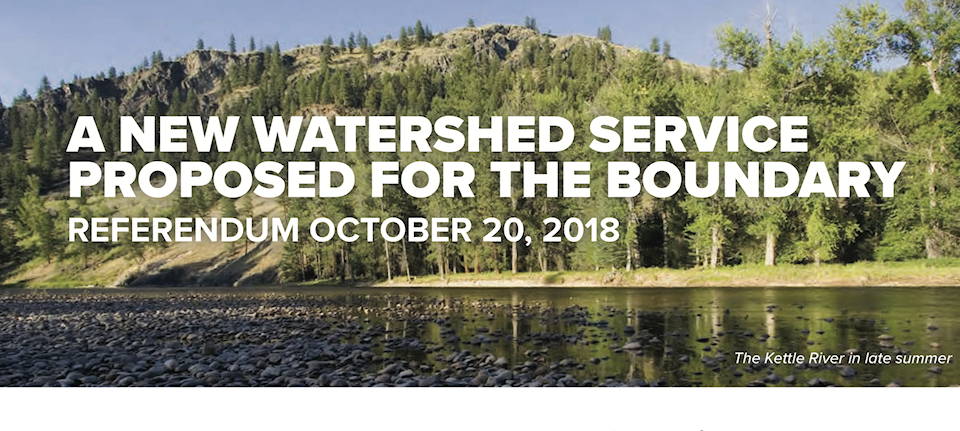The Regional District of Kootenay Boundary is floating a referendum question during the Oct. 20 local government elections, asking residents to approve or disapprove the creation of the Boundary Integrated Watershed Service. Here are the answers to some of the questions voters may be asking ahead of the referendum.
What will the
new service provide?
For the past four years, the Kettle River Watershed Authority has only had 40 per cent of a full-time staff member funded through $35,000 of gas tax money. Manager of Planning and Development Donna Dean said this is not sustainable funding, and the creation of a service is needed to provide coordinated management of the watershed throughout the RDKB. The service will pay for a full-time coordinator, who would work on projects that benefit the entirety of the watershed, including the West Kettle, Boundary Creek, Christina Lake and the Granby River.
That person would also promote good management practices, work on projects dealing with drought, flooding and other natural hazards, educate the public and provide input to local government on policy decisions.
How much will the service cost?
The service needs a referendum approval before it can be adopted. Within that, Dean said the maximum allowable requisition is $160,000 per year. What does that look like on your tax bill? About $4.85 per $100,000 in assessed value of your home.
At a meeting in Christina Lake on Friday regarding the service, some residents questioned why a new service was needed for this. Simply put, explained Roly Russell, board chair, the RDKB cannot move money around. Each service the RDKB runs must function on its own, and money from one service cannot be used to fund something else.
What happens if the
referendum question fails?
Dean said the watershed management plan will essentially be shelved if the referendum doesn’t pass. Watershed work could continue through local stewardship societies, but there will be no coordinated effort by the RDKB. How does this service impact me?
Dean stressed that this is not a regulatory bylaw, and the goal of the service is to protect shorelines and promote watershed management, not regulate well users.
The question will appear on its own ballot on Oct. 20, so it is important that residents living in areas with acclaimed candidates still go out to vote. The referendum needs a majority of voters to vote yes. In five years, the service will be reviewed and will need the assent of 2/3 of the elected officials at the RDKB board representing the three area directors and three municipalities included to vote in favour of continuing the service.
The implementation of a service for the watershed has been a long-term goal, Dean said, and timing is unrelated to the flooding earlier this year. However, it underscore the importance of water management and education.
“Right now what is happening is the river is experiencing the most extreme event in people’s memory. Flooding is a huge problem, and on the river, it is one of the driest years as well. It really highlights the importance of managing. [We can’t] stop this from happening, but to manage the effects of those extremes,” Dean said.
See more frequently asked questions about the referendum in the full story online at grandforksgazette.ca.
